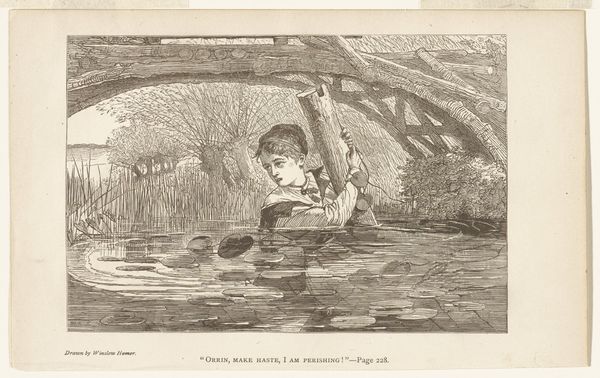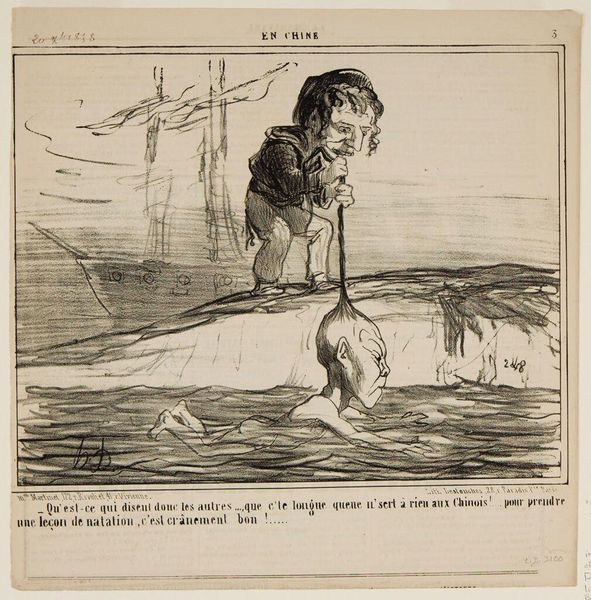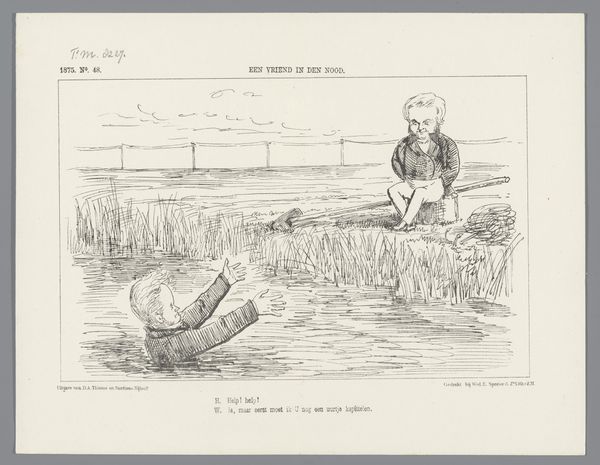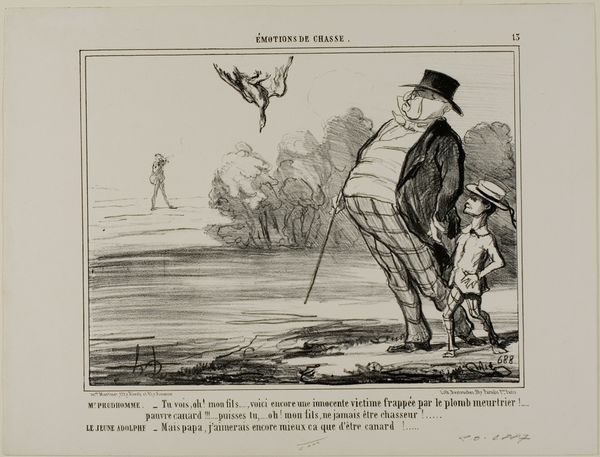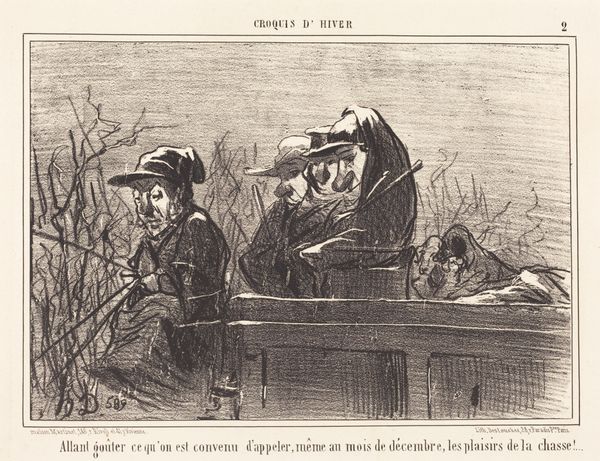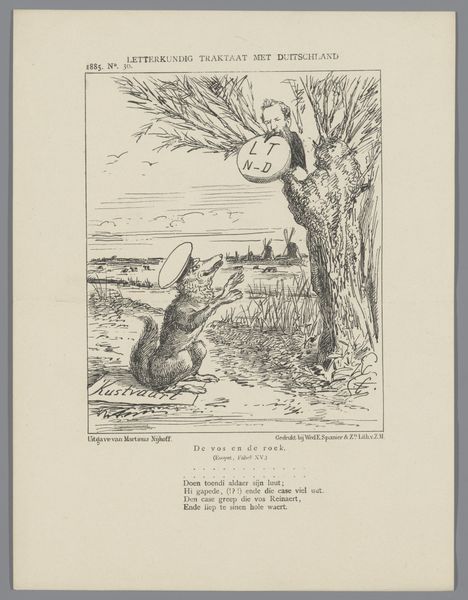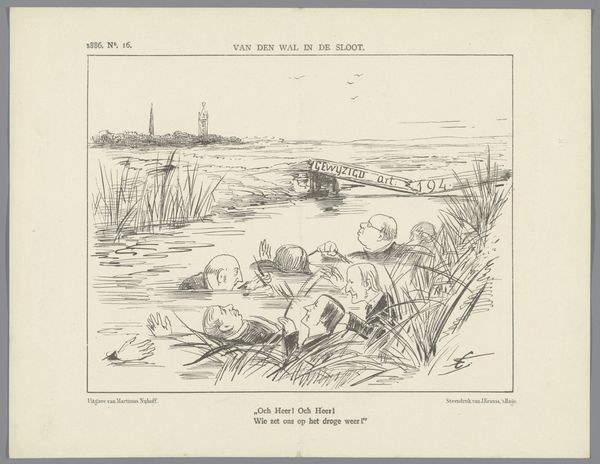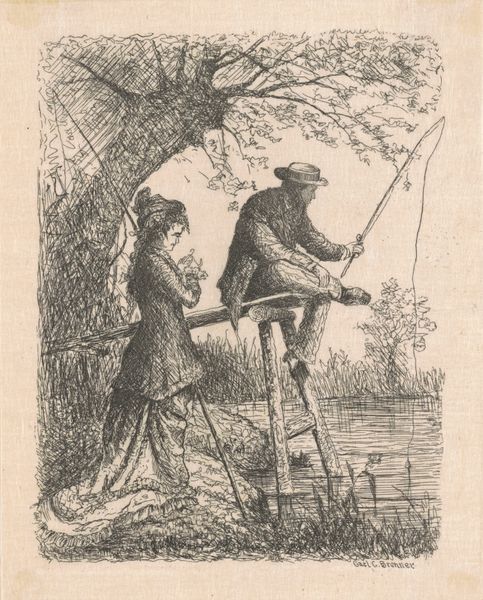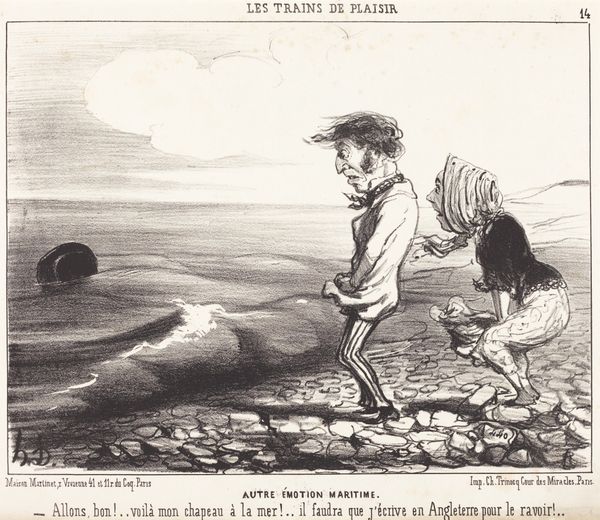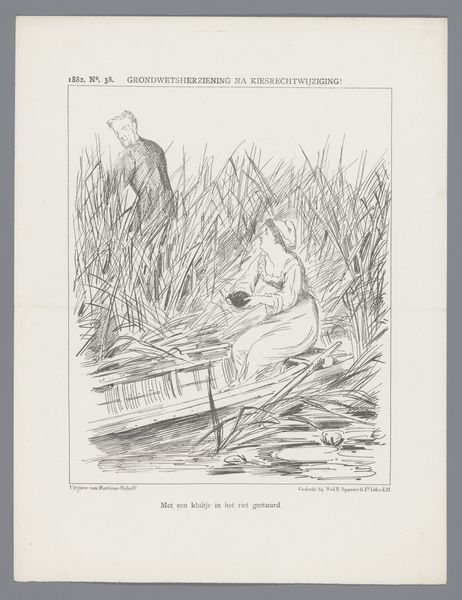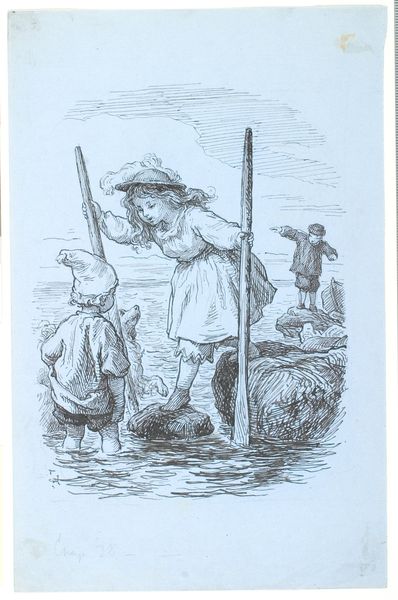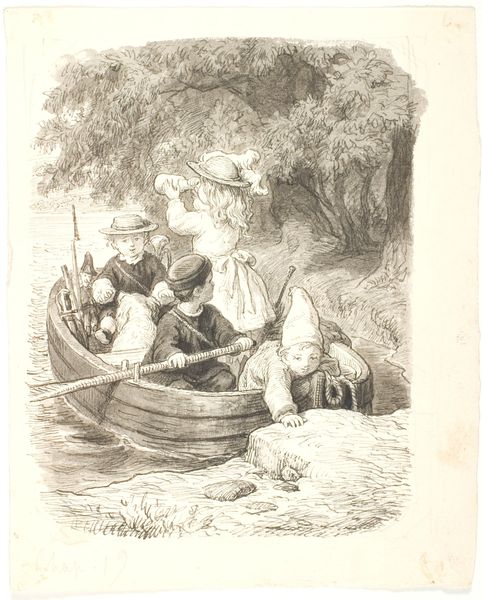
"Orrin, Make Haste, I Am Perishing!" (The Galaxy, An Illustrated Magazine of Entertaining Reading, Vol. VI) 1868
0:00
0:00
drawing, print, engraving
#
drawing
#
narrative-art
# print
#
landscape
#
history-painting
#
engraving
Dimensions: image: 4 5/8 x 6 7/8 in. (11.7 x 17.5 cm) sheet: 5 3/4 x 9 1/2 in. (14.6 x 24.1 cm)
Copyright: Public Domain
Curator: This engraving by Winslow Homer, titled "Orrin, Make Haste, I Am Perishing!", dates back to 1868 and was featured in The Galaxy, An Illustrated Magazine. I'm immediately struck by the tension Homer creates with such simple lines. It has the weight of melodrama despite its illustrative function. Editor: The texture achieved through the engraving is remarkable, especially the interplay between light and shadow on the water. The density of marks shows not only the artist's, but also the engraver's skill. I wonder about the material constraints of creating illustrations for mass consumption: did the need for speed and replicability affect Homer's process, or the perception of illustration itself as craft versus 'high art'? Curator: The plea for help obviously points to a story beyond the image itself, instantly creating narrative layers that connect to a specific time period, but also the eternal damsel-in-distress trope. Water, as a symbolic element, always signifies purification, rebirth, or danger. It begs the question, is she really in peril? Or is she being dramatic? Editor: It also shows how material access shifts perception of luxury. We consider paintings and unique objects more precious now, but this accessible medium would have been broadly seen and interacted with in a daily paper format, shifting focus onto reproducibility over unique "aura." What did "value" really mean back then? Curator: Perhaps value resided in how well the image triggered emotion, prompting the reader to empathize, or even question the power dynamics at play. What I find intriguing are the shadows: even though they create this dark mood, they direct us to consider what isn't there – is Orrin coming to her rescue? The bridge above indicates a possible rescue, and creates visual depth. Editor: Exactly, because then the act of viewing or of ownership turns the reader into a participant. But there are social stratifications there as well—engravings like these are tied to rising literacy rates and availability of information and entertainment for an emerging middle class, expanding what the labor of art even meant at the time. Curator: Considering those points truly broadens the way we experience this seemingly simple piece. Editor: It certainly makes me question how easily we fall into traditional categories instead of valuing artwork's relationship with people.
Comments
No comments
Be the first to comment and join the conversation on the ultimate creative platform.
